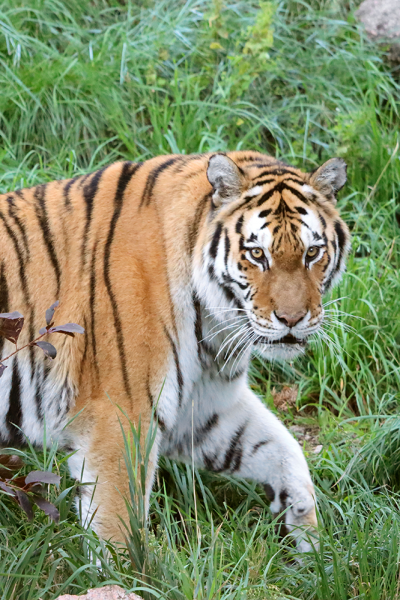

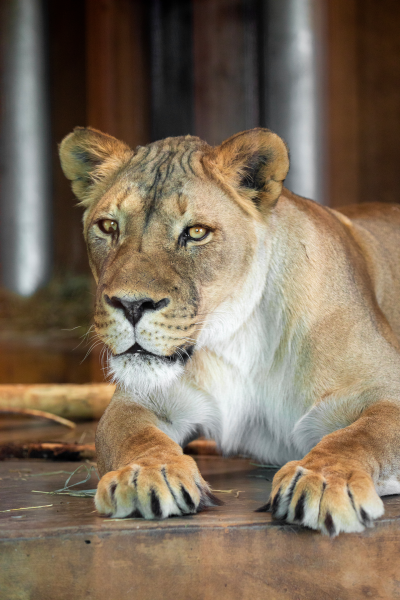

The Cheyenne Mountain Zoo family is mourning the loss of Zwena, a 13-year-old female African lion who was born at the Zoo. Monday afternoon, Zwena’s care team made the difficult and humane decision to euthanize her due to progressive neurological issues and her declining health and quality of life.
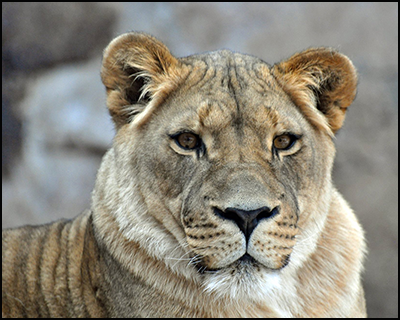
In July, we told you we were making adjustments for Zwena as she struggled with chronic mobility issues associated with her neurological condition. Between July and the beginning of October, she seemed to be having mostly good days. Despite continued treatment and care, she recently started declining quickly. The median life expectancy for African lions is 16.9 years, but as with humans and other species, life span can be less, due to various medical challenges, like the ones Zwena was facing.
Zwena, known affectionately as “Z” by her longtime keepers, was a staff favorite throughout the Zoo. She was well-loved and respected for her no-nonsense approach to building relationships with people.
“She was always the biggest personality out of the girls,” said Diana Miller, African Rift Valley keeper and Zwena’s primary trainer for nearly 9 years. “She was very loud. When she would see us coming she would either make a happy grumble or snarl at you. She was so sassy and fierce – and she loved to participate in her voluntary training. She was always enthusiastic with training and demonstrating her awesome lion behaviors during keeper talks. She would jump up on the cape buffalo statue with such vigor and a loud groan. She was impressive. She made a real impact with our guests.”
Zwena made an impact on her pride, too. She lived with Abuto, the pride patriarch; Lomela, her sister; and Elsa, her niece. The two younger males are Zwena’s nephews, Aslan and Boma. They lived with the full pride when they were younger, but now live as their own bachelor pride.
“The first time Z got to be with the cubs, Lomela was hesitant for them to go out into the big yard, but fearless Zwena just led them right out,” said Miller. “’Aunty Z’ encouraged all three cubs to chase her into the yard and the cubs went flying after her. She just loved playing with them. Lomela would lay nearby and call the cubs to come back, but they just wanted to go and play with Aunty Z. That was her vivacious personality in a nutshell.”
Zwena was an amazing ambassador for her species, helping guests fall in love with African lions through her energetic personality and intense focus. She will be dearly missed.
“She made me the keeper I am today,” said Miller. “You make connections with all of the animals you care for, but some animals leave a bigger paw print on your heart. Zwena definitely did that for me. I am so lucky to have gotten to know her and work with her. We will all miss her so much, but we’re grateful for the time we had together.”
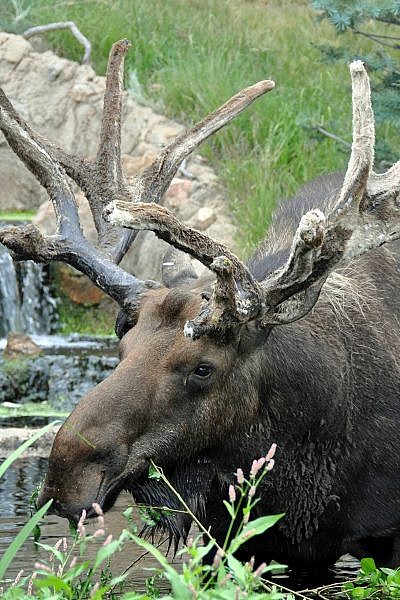

This weekend, the Cheyenne Mountain Zoo family said a difficult goodbye to Tahoma, our well-loved friend and colleague in the fight to save wildlife.
“We strongly believe all of our animals have a very important job to do,” said Bob Chastain, president and CEO of Cheyenne Mountain Zoo. “They are ambassadors for their wild counterparts. They do the yeoman’s work of inspiring millions of people to understand and care about the challenges wild animals face.”
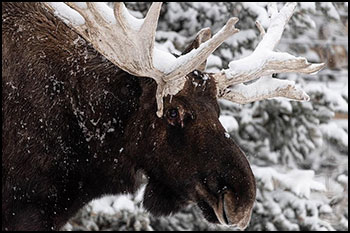
We humans are the best chance animals have for thriving in the wild. Tahoma helped tell the stories that inspired people to help. He encouraged people to do things like buying a hunting or fishing license, paying state park entrance fees, reducing mining by recycling, saving water and contributing to conservation efforts. Every visit to the Zoo is conservation in action. Tahoma’s CMZoo fans raise money and vote for conservation projects around the world through a portion of their memberships and entrance fees.
“Like many of our animal teammates at the Zoo, even him being here was a bit of a miracle that the people of Colorado Springs might not know,” said Chastain. “While you might get lucky and see moose in the wilds of Colorado, seeing how amazing they are up close in a safe environment is a rare treat.”
Cheyenne Mountain Zoo was one of only eight AZA-accredited institutions in the United States to house moose. Because moose are so rare in human care, there was little studied or known about their care and management until recently. Tahoma partnered with his care team to pioneer moose care practices, like formulating nutritious moose diets, blood tests, hoof care and more.
For people who haven’t worked at a place like Cheyenne Mountain Zoo, it may seem odd to refer to a moose as a colleague. But CMZoo staff firmly believe that all of us – humans and animals alike – have one main job to do, which is to connect guests with animals, and inspire them to care about wildlife. Tahoma did that job better than most of us.
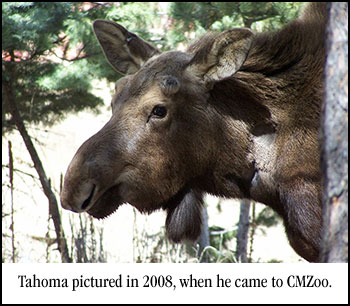
Tahoma came to Cheyenne Mountain Zoo as a 10-month-old calf, and immediately began making connections with guests in the newly opened Rocky Mountain Wild exhibit. Less than two weeks shy of his 13th birthday, due to chronic arthritis pain and other conditions that could no longer be controlled with medication and treatments, Tahoma’s care team made the difficult decision to humanely euthanize him. He passed peacefully on a soft bed of cedar shavings, surrounded by his loving keepers and vet staff. Tahoma spent nearly his entire life inspiring guests and staff at Cheyenne Mountain Zoo, and he will be remembered forever by those whose hearts he touched.
“All of our animals make an impact in their own way, but Tahoma took it above and beyond,” said Rebecca Zwicker, animal care manager in Rocky Mountain Wild, who worked with Tahoma for 10 years. “Before Tahoma, I never would have considered myself a ‘moose person,’ but he had me within the first minute of meeting him. I looked into those big brown eyes and handed him a cracker, and he nuzzled my hand and immediately had my heart. I can’t really put it into words, but there was something magic about Tahoma, and I know I’m not the only person who felt that.”
Zwicker and the rest of the Rocky Mountain Wild care team believe in the Zoo’s philosophy that our animals are our respected colleagues, and that we complete the work of the Zoo together as a team. We believe our animals are the essence of the Zoo. Our role is to help them succeed at their jobs, by providing the best possible habitats, health care, training, and opportunities for them to create meaningful relationships with our guests.
“Tahoma had this special way of connecting with people,” said Basia Dann, Rocky Mountain Wild animal keeper. “It was like he knew when we were busy and he needed to ‘work’ a little harder to reach more people. We would find huge crowds of people admiring him on busy days. He would position himself really close to people and create those opportunities for us to answer questions about moose and teach people about him to foster those important connections. That’s our job, and he was really good at it.”
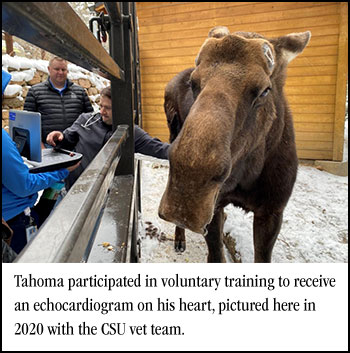
Tahoma was a quick study. Through positive reinforcement training, Tahoma and his keepers built a relationship that meant everyone could look forward to training sessions. It didn’t take him and his keepers long – sometimes just one day – to perfect voluntary injection training, ear cleaning sessions, x-rays, laser therapy, EKG readings and blood draws. Tahoma was a catalyst for Cheyenne Mountain Zoo’s renowned hoof care program. He was one of the first animals at the Zoo to voluntarily receive care on his hooves.
“I know for a fact what we learned from Tahoma has helped our giraffe,” said Zwicker. “There are other zoos in the U.S. that have started working with their moose because of the work we did with Tahoma. He was inspiring.”
Zwicker recalls sharing Tahoma’s achievements in hoof care to a room of three hundred people at an animal husbandry behaviors conference. That conference and another, during which zookeepers and trainers spent a day at Cheyenne Mountain Zoo and met Tahoma, led to somewhat of a celebrity status for him in the zoo community. Tahoma was photographed for National Geographic photographer Joel Satore’s ‘The Photo Ark’ series and was even featured in a popular outdoor clothing company’s advertising campaign.
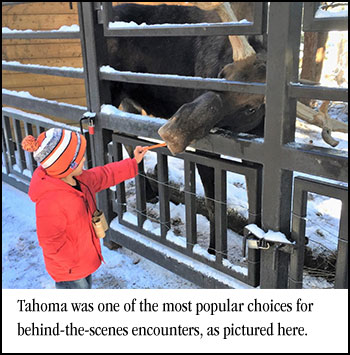
“He’s a legend,” said Sarah Dugger, Rocky Mountain Wild animal keeper. “I’ve been tracked down by keepers when I’m visiting other zoos just because I was Tahoma’s keeper. Even if they had never met him, they knew about Tahoma and had been inspired by him in some way. It wasn’t about meeting me; it was exciting for them to meet someone who worked with Tahoma.”
Tahoma made an enormous impact, and will leave a personal mark on so many lives. Thousands of people looked forward to guessing the weight of his antlers in Tahoma’s Annual Antler Weigh-In. He was motivation for a woman who had breast cancer and met her goal of visiting him once she went into remission. His face is tattooed on people’s bodies. He touched people’s hearts and expanded people’s horizons through education and the reminder that it’s always worth it to work to achieve a goal.
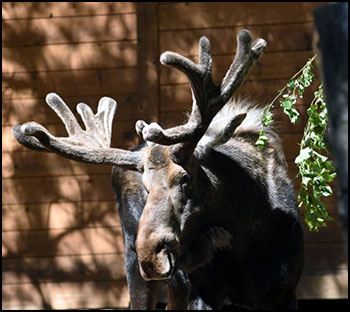
Although the Zoo was closed to the public on Tahoma’s last days, he was visited by his colleagues from every department at the Zoo.
“We showered him with love on his last few days,” said Zwicker. “It’s always a difficult decision, but we loved him too much to let the pain last. I’ve been thinking of our guests and how much they’re going to miss him, but want them all to know that he didn’t go out without any fanfare.”
Tahoma’s legacy will continue through the work of his fellow animal ambassadors, keepers, Cheyenne Mountain Zoo staff, the greater zoo and conservation communities, and the people who take action to protect wildlife and wild places because of the deep connections he made.
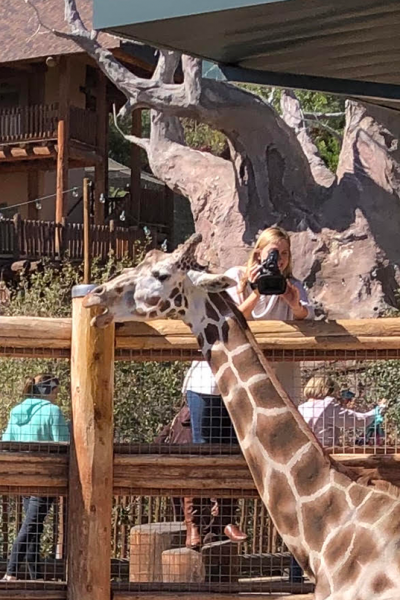

The Cheyenne Mountain Zoo family is celebrating the long life of the eldest member of the Zoo’s reticulated giraffe herd, Riyadh, today. Since her birth at CMZoo in 1990, she made countless connections with guests, members and fans, who would delight at her small-but-mighty personality and regal nature.
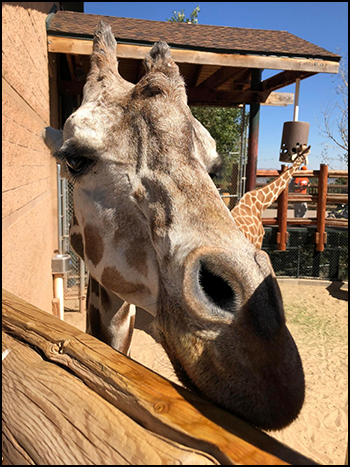
As she grew older, Riyadh began showing normal signs of aging, including dealing with arthritis. Over the last several months, she responded well to medications and seemed to be comfortable. But yesterday, her keepers noticed she wasn’t bearing weight on her hind right leg. With the CMZoo vet team, they made the difficult decision to humanely euthanize Riyadh, as her treatments were no longer providing enough relief for her to continue having a comfortable quality of life.
“Despite the fact that we’ve been mentally preparing for this time to come, it’s still sad to say goodbye,” said Rachael Hahn, animal keeper for giraffe and Riyadh’s primary trainer. “This was the right decision for her, and I’m so glad she was able to spend her last day in the beautiful Colorado sunshine.”
Riyadh was loved for her small stature and confident personality. She was much shorter than the majority of the herd, and was often mistaken for a calf.
“People really fell in love with her because she was easy to tell apart from the rest of the herd,” said Amy Schilz, senior lead keeper for giraffe. “Those who didn’t know her sometimes thought she was a baby, and she would benefit by getting extra lettuce from guests who wanted to feed ‘the little one.'”
“She was also one of our giraffe that was more willing to let guests give her scratches on her neck, which was a special experience that not every giraffe will allow,” said Diana Miller, senior animal keeper for giraffe. “For some reason, she was hesitant to let keepers touch her neck, but she didn’t mind at all when guests would pet her.”
Her shorter legs made her easy to identify in the herd, but didn’t impact her confidence if she was ever nudged by a larger herd mate.
“She was hilarious to watch interact with the other giraffe because of how tenacious she was,” said Hahn. “She could get whatever she wanted, despite her size. Most of our giraffe get out of the way when Mahali, who’s one of our tallest giraffe, comes around. But not Riyadh! She would push him around to get the best browse or whatever she wanted. All of the other giraffe got out of the way for Riyadh.”
The keepers describe Riyadh as having a “regal” way about her – so much that they had nicknamed her “Princess Ri.”
Riyadh helped the newest herd member, 2-year-old Panya, settle in to the herd, spending nights with Panya in a stall separate from the herd while Panya, who has a shy demeanor, adjusted to her new surroundings.
“Panya and Riyadh developed a strong bond,” said Miller. “It seemed like they found a soulmate in each other, since they’re both smaller in stature.”
Riyadh, pictured here in Sept. 2019 sharing the side yard with Viv, was known for her small stature and unique markings
Throughout her life at CMZoo, Riyadh contributed to her species as a well-loved animal ambassador and through her individual reproductive contributions. Riyadh gave birth to eight healthy calves, leaving a legacy of six healthy grandcalves and one healthy great-grandcalf. Two of Riyadh’s daughters, 19-year-old female giraffe, Twiga, and 22-year-old female, Muziki, are still members of the herd at CMZoo.
Riyadh participated in voluntary training that allowed our vets and staff to help giraffe in human care and in the wild. All giraffe in our herd can choose to participate in trainings that allow vet staff to perform research on hoof care and even build a life-saving plasma bank.
“Riyadh was a little difficult to train in the beginning,” said Schilz. “She would outsmart me on every maneuver! Once we figured out a way to give her full control over everything that was happening, we started to make headway. She learned to touch a target stick, which was our cue that we could touch her hooves or do some other contact that we needed. If she gave us ‘permission’ by using the target stick, we were good. But she could still throw out a stern ‘side-eye’ look, if she didn’t approve of something we were doing.”
Once Riyadh and her keepers figured out the key for her training, she became a training superstar. She was often the giraffe that helped teach other giraffe professionals from around the world how to train during CMZoo’s annual Giraffe Care Workshop. Since she was smaller, she was less intimidating for participants to work with, and she was solid in responding to cues, even for those who didn’t have a relationship with her or have as much experience with training giraffe.
“Even as her primary trainer, she taught me so much about training and caring for giraffe,” said Hahn. “She was just so smart! She was super special.”
She also helped to pioneer groundbreaking care for our herd, as she was one of the first to voluntarily accept shoes on her hooves as a treatment for her arthritis. She also voluntarily allowed a veterinary ophthalmologist to take her eye pressure readings using a puff of air (non-contact tonometry) – something many humans have trouble tolerating.
In the past 30 years, there has been an estimated 50 percent decline in wild reticulated giraffe populations. Giraffe Conservation Foundation estimates only 15,780 reticulated giraffe remain in the wild.
Riyadh’s role as an ambassador for her species helped countless CMZoo guests fall in love with giraffe, inspiring them to take action to protect her wild relatives. CMZoo has partnered with the Giraffe Conservation Foundation to support conservation efforts. One recent example is Operation Twiga, a giraffe translocation project in Uganda, Africa. The Zoo’s visitors and members contribute significantly to those efforts through Quarters for Conservation, a program by which 75¢ of every Zoo admission is allocated to conservation. Annually, Quarters for Conservation raises half a million dollars for conservation partners around the world.
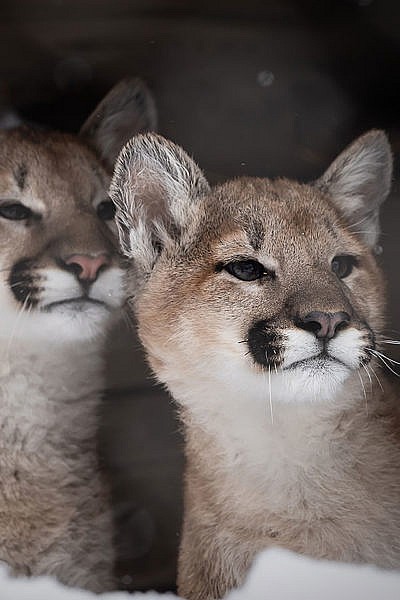

Animal Care Teams Address Additional Complications with Female Sibling
COLORADO SPRINGS, Colo. – Cheyenne Mountain Zoo is mourning the unexpected loss of female mountain lion, Sequoia, who passed away Sunday night after post-surgical complications from being spayed.
Because of Sequoia’s sudden, rare and unanticipated reaction to her recovery, veterinary staff suspected one potential cause may have been an allergy to her sutures. With genetic allergies in mind, CMZoo performed an additional examination yesterday on Sequoia’s sister, Adira, who had the same surgery earlier this month. During that examination – which was intended to give us a better look at how Adira is recovering from the surgery – we were pleased with her healing, but we saw, on x-ray, something that looks like wire or rope in Adira’s stomach. Further investigation will be required before we will know whether it may harm Adira.
The object may pass naturally. Adira’s best hope is to avoid another surgery while she’s still recovering from the first one. If the object is dangerous and Adira needs surgery to remove it, the risk of losing her is elevated, no matter what we do.
Sequoia and Adira were spayed on Thursday, Jan. 9, 2020. The surgery requires incisions between the protective muscles on the animal’s abdomen. Although this is a common procedure, any surgery requiring anesthesia is complex and the recovery can run into complications, especially with wild animals that can’t be examined as closely in the days following surgery. Although complications are rare, they are possible, and can be very serious.
The animal care team made the decision to perform spay surgeries on Sequoia and Adira because unspayed big cats are more likely to experience health problems later in life, such as cancer and hormonal imbalance that can cause infection. The mountain lions also needed to be spayed to avoid attracting wild mountain lions to their exhibit during times of estrus, which can be dangerous for animals and our guests. Our third mountain lion sibling, male Sitka, was neutered on the same day that the females were spayed. The neutering procedure is less complex than the procedure for females, and Sitka appears to be recovering well.
“We first noticed swelling around Sequoia’s incision mid-last week, which isn’t unusual,” said Dr. Jon Romano, Cheyenne Mountain Zoo head veterinarian. “We treated her with anti-inflammatory medications and antibiotics and continued daily checks while limiting her physical activity. I personally assessed Sequoia on Saturday night and was satisfied with her progress. Sunday morning, we discovered her surgical site had opened up overnight.”
Sequoia’s team rushed her to the veterinary clinic, where they addressed her complications. She survived the emergency surgery, but remained in critical condition and unfortunately passed a few hours later.
“Sequoia’s passing has shocked us,” said Bob Chastain, Cheyenne Mountain Zoo president and CEO. “Even after 25 years in the profession, this doesn’t get easier. It is a reminder that no medical procedure is simple or without risk. As humans in this day of advanced medicine where miracles are performed every day, this is a sobering reminder.”
Sequoia made an enormous impact in her short life. She brought the CMZoo family and the Colorado Springs community a sense of hope and joy. We welcomed her to the Zoo, as she was taken in after being orphaned with her siblings in the wild. Our hearts melted when the kittens formed a relationship with aging mountain lion, “Grandma” Kaya, in her final months. And now, we mourn her together through this tragic chapter. Keepers will continue monitoring Sitka and Adira through their post-surgery recoveries.
About Cheyenne Mountain Zoo
Cheyenne Mountain Zoological Society was founded in 1926. Today, Cheyenne Mountain Zoo, America’s only mountain zoo, offers comprehensive education programs, exciting conservation efforts and truly fantastic animal experiences. It is Cheyenne Mountain Zoo’s hope that guests fall in love with animals and nature, and take action to protect them. Of the 233 zoos and aquariums accredited by the Association of Zoos and Aquariums (AZA), Cheyenne Mountain Zoo is one of just a few operating without tax support. Cheyenne Mountain Zoo depends on admissions, membership dues, special event attendance and donations for funding.
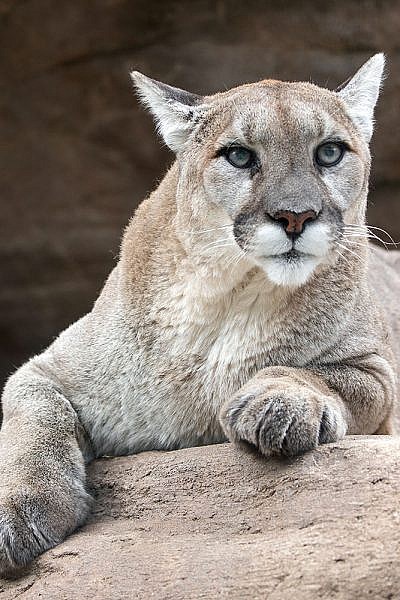

Colorado Springs, Colo. – Cheyenne Mountain Zoo is mourning the loss of Kaya, a 13-year-old mountain lion who lived a long life at CMZoo after being orphaned in the wild in Wyoming in 2006. This summer, she again captured the hearts of guests when she earned the nickname ‘Grandma Kaya’ by embracing the presence of three young kittens who were also orphaned in the wild and came to live at CMZoo.
Kaya’s passing comes in the midst of a difficult week, medically, for several beloved animals at the Zoo. In the past several days, urgent or emergency procedures have been conducted not only on Kaya, but also on Roxie, our oldest Western lowland gorilla at age 43, and on Zwena, one of our two oldest African lion sisters at age 12. The team is cautiously optimistic about both Roxie and Zwena, although further complications are possible for both animals.
Kaya, who would have turned 14 in November, passed away overnight in her den. After a sudden change in her energy level late last week, Kaya then refused to eat or take medications, even her favorite treats: goat’s milk and fish. On Saturday morning, veterinary staff performed an emergency examination to try to pinpoint the issue and treat it.
During the examination, Kaya didn’t show any specific issues, so she was treated for potential dehydration and given medication to make her more comfortable. Following the treatment at the CMZoo vet clinic, Kaya appeared to have recovered well without any complications and returned to her den to rest. Sunday morning, keepers found that despite the team’s best efforts, Kaya had passed overnight.
Kaya was blind and had ongoing age-related arthritis. A recent blood draw showed signs of early kidney disease, which isn’t unusual for a cat of her age. She is believed to have passed of natural causes and general age-related issues.
Mountain lions are usually solitary in the wild, but Kaya and her brothers lived together for their entire lives. Kaya was the last remaining sibling. Yuma died in July 2016, Motega passed in February 2019, and CMZoo lost Tocho in April 2019. After Tocho’s passing, keepers and guests had questions about whether Kaya would do well in the mountainous three-yard mountain lion habitat without her brothers and the company they’d always provided.
Just one month later, CMZoo received a call from the mountain lion Species Survival Program (SSP). Three six-week-old mountain lion kittens had been found orphaned in Washington State and needed a home right away. Although for bittersweet reasons, CMZoo had room to take them.
“At that point, our focus was on providing a home for these kittens and on creating an environment where Kaya had the option to enjoy having mountain lion company again,” said Rebecca Zwicker, Rocky Mountain Wild animal care manager who worked with Kaya and her siblings for over ten years. “It was also an opportunity for these kittens to have an adult female mountain lion around, to be there with them in those tender first months when they were moving into this strange new world. Kaya really showed them the ropes of the exhibit.”
Zwicker recalls talking with her fellow Rocky Mountain Wild keepers about how the kittens — females Adira and Sequoia, and male Sitka — were learning from Kaya. They learned to explore the exhibit, where to find the best sunny nap spots, and how to approach Kaya.
“Their introduction went smoothly, but it wasn’t like they raced into each other’s paws,” said Zwicker. “The whole time we were planning their introductions we kept in mind that Kaya is blind, older, much bigger and a bit slower. Thirteen-year-old Kaya had to set some ground rules with these rambunctious kittens.”
After vocal warnings and a few light physical corrections from Kaya, the kittens learned it wasn’t in their best interest to surprise their blind cohabitant. Keepers noticed the kittens would approach her more slowly and with plenty of ‘chirps’ to let Kaya know they were coming. Once Kaya seemed to accept their presence, though, she would lie nearby while the kittens wrestled each other, and sometimes even got in on the fun.
Kaya was often seen navigating the rocky habitat, closely trailed by the kittens, and cuddling with them in the same sunny spot where she used to cuddle with her brothers. One day, keepers noticed Kaya had some wet, matted fur patches on her sides, legs and shoulders. They weren’t sure what was causing it, but then realized the kittens had been grooming Kaya. Grooming is often considered a sign that animals are comfortable around each other, and in some species is seen as a bonding activity.
“When Kaya accepted those kittens, those of us who had been working on the introductions knew it was just magic,” said Zwicker. “Kaya’s story is so powerful because it’s full-circle. We’ve seen her step into this world with her brothers as a young, unsure, orphaned kitten. We’ve seen her develop relationships with her keepers and grow up into a rock star trainee. We’ve seen her tenacity through the hardship of losing her eyesight. We’ve seen her lose her brothers one-by-one and witnessed her perseverance to continue training and stay engaged during the weeks she was alone in the habitat. To see her become ‘Grandma Kaya’ in her final months was like she’d completed the cycle. Those kittens were comfortable with her, and Kaya was an important piece of their world. She’s passed the torch, in a way. I just wish they – and we – could have had her a little longer.”
Keepers will closely monitor Sequoia, Adira and Sitka, who have returned to their normal behaviors. Keepers gave the kittens access to Kaya after she passed, so they had the opportunity to find closure.
“Sitka went into Kaya’s den and slowly approached her, sniffed her, gave her a chuff (a cat greeting), then chirped and lied down next to her,” said Zwicker. “After a few minutes, he went back outside to find his sisters, who were climbing up a branch against the glass viewing area, being their normal crazy selves. Things will be different for them without Kaya, but they have us and each other, so they’ll be okay.”
Having the young kittens inspires keepers to continue serving Kaya’s species and her legacy through this next generation of CMZoo mountain lions.
It’s the end of an era for Rocky Mountain Wild. As CMZoo says goodbye to the last of the first orphaned siblings, it’s heartwarming to know that the next generation of kittens had the chance to benefit from Kaya’s presence, and that they provided Kaya with cuddles, playtime and company during her final months.
About Cheyenne Mountain Zoo
Cheyenne Mountain Zoological Society was founded in 1926. Today, Cheyenne Mountain Zoo, America’s mountain Zoo, offers comprehensive education programs, exciting conservation efforts and truly fantastic animal experiences. In 2019, Cheyenne Mountain Zoo was voted #6 Best Zoo in North America and CMZoo’s Rocky Mountain Wild was named #5 Best Zoo Exhibit in North America by USA TODAY 10Best Readers’ Choice Awards. It is Cheyenne Mountain Zoo’s goal to help guests fall in love with animals and nature, and take action to protect them. Of the 233 zoos and aquariums accredited by the Association of Zoos and Aquariums (AZA), Cheyenne Mountain Zoo is one of just ten operating without tax support. Cheyenne Mountain Zoo depends on admissions, membership dues, special event attendance and donations for funding.
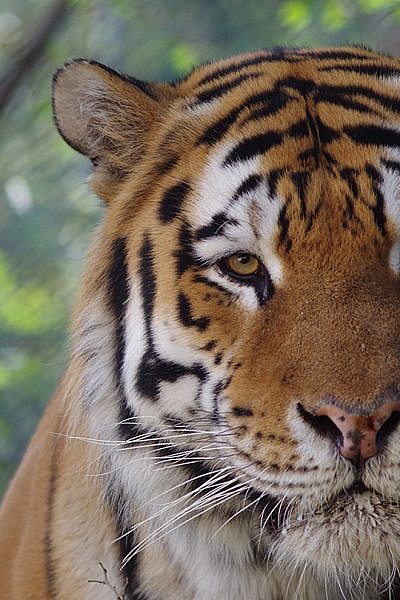

Cheyenne Mountain Zoo will soon bid a heartfelt farewell to Thimbu [TIM-boo], a nine-year-old Amur tiger with a freckled nose and an ‘aww-inspiring’ way of adorably rolling on his back in the tall grasses of Asian Highlands.
As part of a breeding recommendation from the Amur tiger Species Survival Plan (SSP), Thimbu is moving to Bramble Park Zoo – an Association of Zoos and Aquariums-accredited zoo, in Watertown, South Dakota – in late October 2019.
“He’s just the loveliest tiger and a wonderful example of why we need to continue to protect and preserve his species,” said Rebecca Zwicker, Asian Highlands animal care manager. “With this difficult-but-important move, we will be doing our part to do just that.”
Thimbu – affectionately known as “Thim,” by his keepers – needs to relocate as part of the SSP’s plan to introduce a female Amur tiger, Savelii, to CMZoo Amur tiger, Chewy, later this year. To learn more about CMZoo’s upcoming Amur leopard and Amur tiger SSP breeding efforts, read this September 2019 article.
In anticipation of his move, Thim’s keepers shared some insights about his personality, a few of their favorite memories with him and their hopes for his future.
“He’s notoriously sleepy in the morning,” said Basia Dann, Asian Highlands animal keeper. “One of my favorite Thim times is when we go to greet him in the morning. He’s usually rolling around on his back and doing his morning stretch routine.”
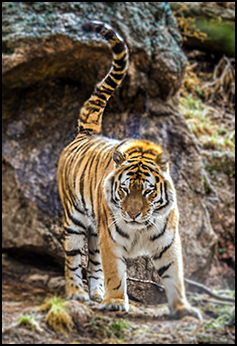
Another morning favorite of Thim’s? The smell of coffee.
“One of my favorite memories with Thim was when we first learned that a sure way for him to chuff [a quick outward breath through the teeth, which is an indication of contentment and sometimes known as a tiger ‘hello’] was to give him a whiff of our coffee,” said Dann. “He’s a cat after my own heart! Sleepy mornings with him are the best.”
Like many scent-driven big cats, Thimbu’s attention isn’t only aroused by the smell of coffee. Keepers found one of Thim’s favorite training motivators and enriching items was a popular perfume.
“His very favorite thing is Amber Romance perfume from Victoria’s Secret,” said Dann. “One time I was training him, and he noticed a spot where we had sprayed the perfume and he left the training session to go over and rub and roll in the perfume. He even licked it off the wall.”
Because tigers and big cats like to scent mark, the perfume is almost irresistible to Thimbu, and trainers spray it to reward him and encourage him to investigate new enrichment items that engage him mentally and physically. Thim doesn’t need much encouragement to be physically active, though, once he’s had his morning stretch.
Thimbu’s keepers and fans throughout Colorado will miss seeing him at Cheyenne Mountain Zoo. But, they know his relocation is an important move for the survival of Amur tigers, which are endangered, with the latest wild count around only 500.
As Thimbu makes the trip to Bramble Park Zoo, he will be accompanied by one of his keepers, who will work with his new team of keepers to help him make a smooth transition to his new home. Keepers at Cheyenne Mountain Zoo and Bramble Park Zoo have been in regular contact to share information about Thimbu that will help this resilient tiger settle in comfortably.
“This move means that even more people will get to see him in all his majesty, and fall in love with tigers because of him,” said Dann. “He’s truly the whole package. I hope Bramble Park Zoo supporters go to the zoo especially to see him and watch him take on this new experience with bravery and resilience, as he always has with us.”
Cheyenne Mountain Zoo guests can visit Thimbu, and wish him well on his next adventure, through mid-to-late October.
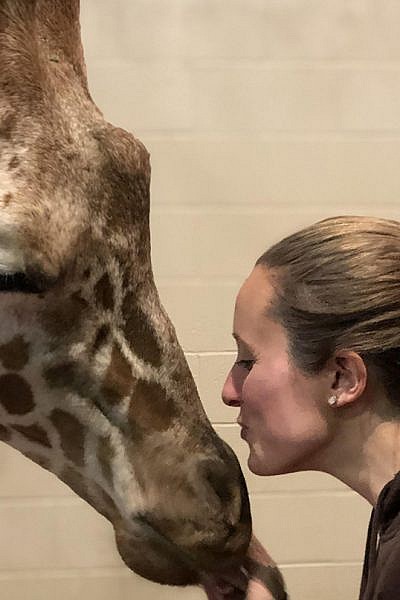

TWO-YEAR-OLD RAE SETS OFF FOR LINCOLN PARK ZOO IN SEPTEMBER
In September 2019, Rae, two-year-old CMZoo reticulated giraffe, will be embarking on her next adventure as an animal ambassador at Lincoln Park Zoo, in Chicago, Ill. The daughter of Msitu and Khalid, and sister of newborn, Viv, and six-year-old, Emy, who now lives in Peoria, Ill., will be dearly missed by CMZoo staff and giraffe fans. But, as she joins a new herd, she will have the opportunity to reach and inspire a new group of people who are sure to fall in love with the curious and social giraffe, as so many did during her time at CMZoo.
In anticipation of Rae’s move, Kayla Ringuette, a CMZoo giraffe keeper who has a special bond with Rae, shared some of her favorite memories of Rae.
“We didn’t have live cameras for Rae’s birth in 2017, so I was the first keeper to meet her,” said Ringuette. “Once Rae started taking food when she was a few months old, I would feed her every opportunity I got in order to build our relationship before asking her to do behaviors. I may have gotten carried away, since she was the first animal I’ve ever trained that had no prior training history with people. I think it’s because of that relationship building that she follows me around everywhere I go. I actually created a montage of pictures where you can see every other giraffe doing something in the background, interacting with enrichment or browse, and she’s right nearby staring at me.”
Over the next two years, Ringuette and Rae continued to develop a trusting relationship, which Ringuette says is in large part because of Rae’s natural curiosity about people.
“Rae was eager to interact with keepers and staff right from the very beginning,” Ringuette said. “In training sessions, she is always really curious. She likes to sniff at hoof trimmings on the barn floor after we do our routine hoof work with the herd. We’ve even had to stop a training session because she refused to stop sniffing the person’s gloves while they were trying to work on her feet. We eventually realized we didn’t need food to reinforce her behaviors during those trainings, because she would rather smell the trainer’s gloves.”
As Ringuette and her fellow keepers continued building relationships with Rae, her trust in them stood out, especially in one memory Ringuette recalls of Rae’s first time going into a narrow area of the barn, called a chute. Making sure the giraffe are comfortable in this area is extremely important. If a giraffe ever needs medical attention or needs to be transported, they need to be comfortable in this space. The chute isn’t as wide open as the rest of the barn, which can make the giraffe unsure.
“One of my favorite memories is the first time Rae came into the chute,” Ringuette said. “The chute can be kind of a scary place for a giraffe going through it for the first time. You’re asking this naturally skittish animal to enter a space alone, where they can’t see very well because of the blind corners. Even after being able to investigate the area with mom, Msitu, Rae still wasn’t comfortable. I decided to try walking her through myself while I reinforced her with food, and it worked! Building trust with an animal to the point that they will follow you into an uncertain place that they wouldn’t even go into with their mom was the most rewarding experience I could ask for as her caretaker.”
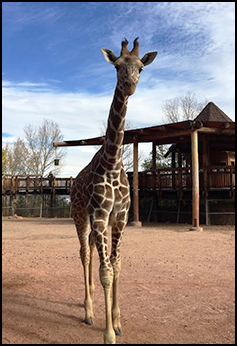
Rae has spent a lot of her time with herd mate, Bailey, a seven-year-old female who is equally as energetic and curious about people.
“They’ve always been mischievous together, testing off-limits areas of the yard and running around, making the rest of the herd excitable,” Ringuette said. “Bailey is our other really social giraffe, so it’s typically one of them breathing on your neck from the other side of the barrier, when you’re focusing on something else.”
Rae’s outgoing demeanor is sure to serve her species well, as an ambassador that makes connections with people, which we hope will inspire them to take action to protect their relatives in the wild.
“Her gregarious nature makes people fall in love immediately, since it seems like she is picking you out of a crowd,” Ringuette said. “She makes you feel very special. Creating connections with people is ultimately her job, and she’s so great at it.”
As part of the Species Survival Plan (SSP), Rae will join Lincoln Park Zoo female giraffe, 21-year-old Etana, and a young male giraffe, Finely, who is three. Under the same recommendation, a female giraffe who could breed with Khalid will join CMZoo’s herd later in the month.
“I will miss my little shadow, but I have very high hopes for this girl in her new home,” Ringuette said. “She is a rockstar with training, and she is already such a great ambassador to her species at two years old, that she is going to make many guests fall in love with her for the rest of her life in her new home.”
Guests are welcome to come and visit Rae to share their well wishes before her move, every day of the week at Cheyenne Mountain Zoo.
Colorado Springs, CO – Cheyenne Mountain Zoo is heartbroken to say goodbye to Tamu, our 32-year-old female reticulated giraffe, who was the oldest giraffe in North America at the time of her passing. Since coming to Cheyenne Mountain Zoo in April 2003, she made strong and countless emotional connections with guests and staff alike, who often affectionately referred to her as ‘Moose’ or ‘Grandma.’
“She was the nicest giraffe on the planet,” said Jason Bredahl, animal care manager. “She would sit under the lettuce hut and eat lettuce all day long and made millions of people’s days. If you have a giraffe selfie on your phone, there’s a good chance it’s with Tamu. She was a guest favorite, for sure.”
Tamu was easy to recognize because of her dark, bushy eyebrows. Her 33rd birthday would have been Friday, Dec. 28.
“She was known for taking care of calves because she was so gentle,” said Amy Schilz, senior giraffe keeper. “I remember when we put up new shade structures in the yard and the calves hadn’t learned to use them as shelters when it rained. Tamu would go out into the rain to stand over the calves to protect them.”
Tamu became well known for providing that maternal comfort for our most recent giraffe calf, Penny, when she was too fragile to be with her mom. Giraffe keepers knew Tamu would be gentle enough to provide her with companionship and security without risking a fall for Penny.
“Tamu had a huge heart and brought Penny a lot of comfort in Penny’s final days,” said Schilz. “We all knew that when Penny’s mom was a little too rough for Penny, that Tamu could step in and provide that giraffe-to-giraffe care.”
Her individual contributions to the continued existence of this endangered species were invaluable. Tamu gave birth to six calves, leaving a legacy of 29 grandcalves, nine great-grandcalves and one great-great-grandcalf. In addition to the contribution of her direct descendants, as an ambassador animal, Tamu helped Cheyenne Mountain Zoo donors, members and guests learn about giraffe and foster important emotional connections to them, which allow us to support efforts that protect her relatives in the wild.
In the past 20 years, there has been an estimated 35 percent decline in wild giraffe populations. Giraffe Conservation Foundation estimates less than 15,785 reticulated giraffe remain in the wild.
Cheyenne Mountain Zoo has partnered with the Giraffe Conservation Foundation to support conservation efforts. One recent example is Operation Twiga, a giraffe translocation project in Uganda, Africa. A significant portion of the operation, over $75,000, was funded by Cheyenne Mountain Zoo’s visitors and members through Quarters for Conservation, a program by which seventy-five cents of every admission is allocated to conservation.
Tamu and her Cheyenne Mountain Zoo herd participated in voluntary trainings that allow our vets and staff to help giraffe around the world in the wild and in human care. The giraffe can choose to participate in trainings that allow vet staff to perform research on hoof care and even build a life-saving plasma bank.
Although Tamu was considered geriatric, her decline happened extremely quickly and unexpectedly. Staff started to notice behavior changes in Tamu around 11 a.m. and said goodbye to her around 1 p.m., when she passed peacefully and naturally surrounded by keepers and vet staff who cared for her deeply.
“She will be missed so much,” Schilz said. “She was really, really smart. Just yesterday, she was participating in training for hoof care. She had a great heart.”
Photos of Tamu are available at this link: https://www.dropbox.com/sh/j16xib11oasi1hk/AADUiw44xbV9xRuR56bGnIraa?dl=0
About Cheyenne Mountain Zoo
Cheyenne Mountain Zoological Society was founded in 1926. Today, Cheyenne Mountain Zoo, America’s only mountain zoo, offers comprehensive education programs, exciting conservation efforts and truly fantastic animal experiences. It is Cheyenne Mountain Zoo’s hope that guests fall in love with animals and nature, and take action to protect them. Of the 233 zoos and aquariums accredited by the Association of Zoos and Aquariums (AZA), Cheyenne Mountain Zoo is one of just ten operating without tax support. Cheyenne Mountain Zoo depends on admissions, membership dues, special event attendance and donations for funding.
— Calf made a big impact on many hearts during her brief life —
Colorado Springs, CO – Cheyenne Mountain Zoo is heartbroken to announce the death of Penny, the giraffe calf. Little Penny was just shy of her two-month birthday when the humane, but extremely difficult, decision was made to euthanize her today.
Penny had been transported to the James L. Voss Veterinary Teaching Hospital at Colorado State University in Fort Collins, CO yesterday for surgical treatment for an infected abscess that was not improving through other treatments. Unfortunately, the expert team there found concerns that were far more serious than originally thought. In addition to the abscess that had spread further into Penny’s abdomen, there were also signs that pointed to infection in the bones of at least three of her legs.
The team also found a dislocated hip joint that multiple X-rays taken over the past several weeks did not show in the past. The team believes the chronic combination of the abscess, a degenerating femoral head and her need to stand awkwardly over an extended period of time led to a recent dislocation.
The highly skilled team at the hospital, along with key members of Penny’s CMZoo care team, discussed potential treatment options for Penny. Because she was facing multiple serious medical concerns, the team determined that her prognosis would be more than she could overcome to live a quality life.
Bob Chastain, president and CEO of Cheyenne Mountain Zoo, said tonight, “We will all miss Penny tremendously. Although our sadness at this time is palpable, we are taking solace in the fact that we truly believe we made the best decisions for her during her short life that we could. It’s always easy, especially in times of grief, to second-guess every decision you made. I have found myself doing that already, and I have cautioned Penny’s care team about this emotion. We will certainly use Penny’s case to help further giraffe medicine in the future, and ensure that the things we have learned from her will live on to help others. And we hope those who have watched Penny’s journey can take comfort in the fact that we made every decision with Penny’s best interests in mind, and we held nothing back from her fans. We were all in this together.”
Penny was definitely a fighter during her short time with us, and so many people around the world fell in love with her through the Zoo’s online documentation of her life – from the live-streaming of her birth, through her first eight days of bonding with her mom and other gentle female members of our herd, and ultimately through the medical struggles that followed her splay at nine days.
The CMZoo team also fell in love with Penny, and they allowed her to be part of her own naming at 10 days old. When the name choices were narrowed down to two finalists, “Mia” and “Penny,” her care team played the songs “Mamma Mia” and “Penny Lane” for her. When she heard the Beatles song, she perked up her ears. From that day on, she was officially known as “Penny,” and affectionately by many of her fans as “Penny Lane.” The original suggestion of the name “Penny” was inspired by Spencer and Julie Penrose, the Zoo’s founders.
Penny’s medical issues derived from her falling on day nine of her life into a splay position. “Splay” is a term used to describe when an animal’s legs go out from under them in an unnatural way. In giraffe, splaying can have varying degrees of severity, from moderately serious to life-threatening.
Since then, Penny’s care team provided around the clock care for her, providing her with everything they could to try to help her recover. They provided her with nourishment through bottle-feeding, and enrichment toys to play with, and assistance in laying down and standing, when she was unable to do it on her own. The Zoo consulted with a wide network of both veterinary and human medical experts along the way.
Although Penny’s own life was brief, her legacy will live on in the work Cheyenne Mountain Zoo is doing to develop cutting- edge medical and husbandry care for giraffe in Zoos around the world.
Penny has also helped to spread the message of the plight of giraffe in the wild.
A team of Cheyenne Mountain Zoo staff and a CSU veterinarian will be traveling to Uganda in the next few days to assist with giraffe conservation efforts as part of Operation Twiga III, in partnership with the Uganda Wildlife Authority (UWA) and Giraffe Conservation Foundation (GCF) to help protect vulnerable giraffe populations in Uganda. Our staff’s contribution to this effort will be dedicated to Penny’s memory.
For those who would like to pay their respects to Penny and thank her care team, the Zoo requests memorial gifts be contributed at www.cmzoo.org/helppenny. Any financial support beyond what is needed to help cover expenses for Penny’s care can be directed to either giraffe conservation or veterinary care for CMZoo animals. In order to direct your gift, please make a note in the “Comments” section online, or on the memo line when writing a check.
Out of respect for the keepers, the giraffe building will be closed to the public on Tuesday and Wednesday (7/31 and 8/1) to allow them some privacy. There will be a box outside of the building for guests to leave cards for the keepers, if they wish.
The Zoo is also starting the process of planning a memorial for Penny, and we will share details soon on how that process will move forward.
About Cheyenne Mountain Zoo
Cheyenne Mountain Zoological Society was founded in 1926. Today, Cheyenne Mountain Zoo, America’s ONLY mountain zoo, offers comprehensive education programs, exciting conservation efforts and truly fantastic animal experiences. It is Cheyenne Mountain Zoo’s hope that guests fall in love with animals and nature, and take action to protect them. Of the 230 zoos and aquariums accredited by the Association of Zoos and Aquariums (AZA), Cheyenne Mountain Zoo is one of just nine operating without tax support. Cheyenne Mountain Zoo depends on admissions, membership dues and donations for funding.